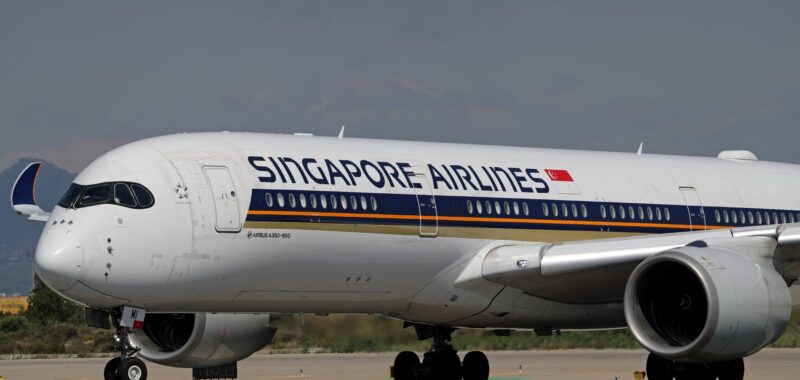SINGAPOREÂ â Shares of Singapore Airlines dropped after the city-state’s flag carrier reported a fall of almost 50% in net profit for its first half April to September period, citing lower yields and growing competition.
As markets opened on Monday, the stock fell as much as 6.2%, before later recovering to trade lower by 3.57%.
Net profit in the first half of the fiscal year came in at 742 million Singapore dollars ($559.12 million), 48.5% lower than the SG$1.44 billion in the same period a year ago.
Operating profit for the company fell 48.8% to SG$796 million, down from SG$1.55 billion a year ago, while revenue increased 3.7% to SG$9.5 billion.
Despite the reduction in profit, the airline maintained an interim dividend of 10 Singapore cents a share.
Singapore Airlines said in a release that the fall in operating profit was due to “increased capacity and stronger competition in key markets,” which led to a fall in yields and ultimately, profit.
Speaking at an earnings briefing, SIA Chief Commercial Officer Lee Lik Hsin said that the company is seeing tougher competition globally, adding that other airlines are recovering to their pre-Covid capacity.
SIA CEO Goh Choon Phong also said that restoring capacity has also put more pressure on yields compared to the year before.
Passenger traffic grew 7.9% year on year, but this was lower than its passenger capacity expansion of 11%, Lee said. This means, passenger load factor â which measures how much capacity is used â dropped 2.4 percentage points year-on-year to 86.4%.
However, SIA will not “hold back on capacity growth just because there’s competition in the market,” Lee added.
Outlook robust but competitive
While the demand for air travel is expected to be robust in the second half of the financial year, “the operating landscape will continue to be competitive,” SIA added.
Last Monday, SIA announced a SG$1.1 billion cabin retrofit program for its 41 long range and ultra long range Airbus A350 jets.
The airline said the first retrofitted long range jet will come into service by 2026, and the program will be complete by 2030.

